Encouraging employees and customers to bike to your business or venue has many benefits - it promotes sustainability, demonstrates social responsibility, and supports healthy lifestyles. Providing secure, convenient bike parking is key to making cycling a viable transportation option. Bike racks are an important investment for any commercial property looking to be bike-friendly. This article will explore the main types of commercial bike racks available and important features to consider.
Loop Bike Racks
Loop racks offer a unique spin on the standard post and ring design. As the name suggests, these racks consist of rounded steel rods welded into continuous loops instead of single rings. The smooth loops allow easy locking without removing the front wheels.
Pros
- Eliminates sharp ring edges that could scrape or damage bike frames and wheels
- Allows bicyclists to keep front wheels installed while parking conveniently
- A sleek, modern, and minimalist aesthetic fits with contemporary architecture.
Cons
- Round shape is slightly less space efficient than standalone rings
- Limits flexibility to lock bikes in different orientations
With their safety-focused smooth contours and subtle modern styling, loop racks are ideal choices for brand-new office complexes, retail centers, and public spaces wanting to project simplicity and style. The lack of jutting pieces also suits high-traffic zones prone to accidental bumps and collisions.
Grid Bike Racks
Grid-style racks provide a modular and fully customizable bike parking system. These racks utilize a framework of perpendicular metal bars attached to form "walls" of parking spaces with built-in U-shaped locking points. Grid component pieces can be configured in various layouts like squares, zigzags, and diagonals to maximize space.
Pros
- Fully customizable rack arrangements to match unique spatial constraints or aesthetic goals
- Modular construction allows expansion as future parking needs evolve
- U-locking points integrated into the frame itself at each designated bike spot
Cons
- Multiple connection joints are prone to rust and corrosion issues over time
- It is not as space-efficient for irregular organic layouts like circles
Grid racks enable creative statement pieces that are perfect for modern tech campuses wanting to match their innovative architecture and environments. The mix-and-match flexibility also suits museums, galleries, and exhibit halls needing easily reconfigurable bike parking designs.
Circle Bike Racks
As the most spatially efficient parking option, circular bike racks align multiple bikes tip-to-tip in a concentric ring formation around a central post. This allows a small footprint to accommodate 8-12 parked bikes, depending on size. The shared center post incorporates U-shaped rods or rings to enable locking.
Pros
- A very compact circular footprint maximizes bike capacity even in the tightest spaces.
- Organized overlapping formation promotes orderly, aligned parking
- Shared locks and simplified construction reduce costs for high-density capacity
Cons
- Overlapping handlebars risk potential bike damage from collisions
- Shared central post limits U-lock types to rings able to fit
When floor space availability is extremely constrained, circular racks offer the ideal way to optimize bike storage density. Useful in cramped urban downtowns, narrow alleyways, and limited apartment or condo parking.
Low Profile Bike Racks
Low-profile bike racks set themselves apart by placing support arms and locking rungs just a few inches off the ground rather than at standing hip level. This allows bikes to rest gently on the rack structure itself instead of being lifted onto a higher-standing rack.
Pros
- Eliminates the need to lift bikes onto stands
- Accommodates small wheel bikes that may not fit standard racks
- Prevents lightweight children's bikes and trail bikes from toppling
- Allows users with disabilities to easily park their cycles
Cons
- Can make properly locking bike frames more challenging
- Low positioning in pedestrian corridors risks tripping hazards if not marked
Ideal Uses
The ultra-low positioning makes these racks uniquely suited for:
- Children's schools and playgrounds - Kids can easily park their bikes without assistance
- BMX tracks and skate parks - Matches natural low positioning of stunt bikes
- Disability access parking - Enables wheelchair/arm bike riders to transition seamlessly
- Beach boardwalks and coastal trails - Stabilizes lightweight cruisers prone to falling
Inverted "U" Racks
The classic inverted “U” rack, also sometimes called a staple rack, is likely the most common and recognizable bike rack design. As the name suggests, these racks consist of one or multiple “U” shaped metal tubes installed into the ground that allow bicycles to lean and lock against them securely.
Pros
- Simple, affordable, no-fuss design
- Allows frames and wheels to be locked easily
- Takes up minimal space
Cons
- Only supports 1-2 bikes per rack
- Not the most aesthetically pleasing
Inverted "U" racks work well for small retail stores, office buildings, and other venues with modest bike parking needs. They are best suited to short-term parking.
Post and Ring Racks
Post and ring racks provide a similar function to U-racks but utilize vertical or angled posts with large metal rings attached instead of horizontal tubes. Bikes can be locked to the stable rings by their frame, wheel, or both.
Pros
- Allow more bikes to be parked per rack
- Ring design accommodates diverse frame styles
- More visually appealing
Cons
- Installation can be more complex
- Exposure can lead to some vehicle damage
Post and ring racks are ideal for locations that need capacity for 10+ bikes. Their efficient use of space makes them a smart choice for urban campuses, transit centers, and mixed-use spaces.
Wall-Mounted Racks
As indicated by the name, wall-mounted bike racks attach directly to walls, usually vertically. They hold bicycles by their wheels or frame against the wall using modular brackets.
Pros
- Save floor space by using vertical real estate
- Easy DIY installation
- Allow creative and aesthetic design
Cons
- Weight capacity can be limited
- Improper mounting leads to detached hazards
- Provide less security than fixed racks
Wall racks present space-saving options for retail stores, restaurants, offices, and other venues where floor space is limited. They best serve staff parking needs rather than high-volume customer/student parking.
Custom & Decorative Racks
Beyond basic functionality, bicycle parking racks can also be used to showcase a venue’s unique brand or enhance the surrounding landscape. Custom racks utilize specialty designs and materials like stone, timber, or metalwork. Elevate Your Property with Commercial Bike Rack Options.
Pros
- Highlight brand identity and design aesthetic
- Integrate seamlessly into streetscapes and architecture
- Attract attention as artistic features
Cons
- Substantially higher cost
- Often accommodates fewer bikes
- The creative form can sacrifice function
Custom bicycle racks transform spaces at public parks and green spaces, tourism destinations looking to emphasize local culture, and businesses wanting to reaffirm their image.
Bike Rooms
For properties that anticipate an influx of bike parking or are concerned with high bike thefts in the area, bike rooms provide a more secure alternative to outdoor racks. Indoor bike rooms are locked, limited access areas where bikes can be stored safely and shielded from the elements. Typically accessed via a passport-type system, rooms are fitted with racks or lockers for parking.
Pros
- Sheltered inside means no weathering and reduced rust compared to outdoor bike parking racks.
- Restricted entry limits opportunities for theft
- Can incorporate additional amenities like seating, tools
Cons
- Often less parking density possible vs outdoor bike parking racks
- Requires full room buildout, higher cost
- More stale air, space may need ventilation
Risks & Protection from Bike Thieves
Bike thieves target easy opportunities like unlocked bikes left unattended. Bike rooms are much safer than open-access street racks but still require smart precautions:
- Strong doors with electronic access control fail-safes
- Monitored by security cameras covering all entry points
- Ensure racks allow the use of thick U-locks or heavy chains
- Signage reminding users to lock bikes, not share access fully
Taking these preventative steps reduces the chances that thieves gain access to stolen parked bikes inside the room.
Integrating large-capacity bike rooms into new constructions or existing buildings offers a higher level of service for cyclists with performance or expensive rides. The closed environment also encourages multi-modal commuting by bike + transit.
Key Features to Consider
Not all commercial bike racks are made equal. Even within style categories, models offer varying durability, security, capacity, and ease of operation. Key variables to examine closely include:
Security and Locking Options
Deterring and preventing bike theft should be the #1 priority. Look for racks that allow multiple locking points (frame + rear wheel or both wheels) using standard U-locks or thick cables. Sturdy construction is also essential.
To maximize usability and safety, it's important to ensure:
- Racks have adequate rungs and clearance to lock frames securely, preventing easy theft
- Bright safety reflectors, flags, or paint indicate rack presence to prevent pedestrian collisions, especially among seniors or the visually impaired.
- Racks are situated away from high-traffic zones to avoid congestion but still offer visibility to deter thieves.
- Surfaces surrounding racks are paved and flat to accommodate wheels right on ground level.
Durability of Materials
Racks exposed to the elements year-round should resist rust, corrosion, UV damage, and road debris impacts. Stainless steel and aluminum fare best under harsh conditions. Moving components need regular inspection.
Weight Capacity
The size and quantity of bikes a rack must accommodate will dictate the necessary per bike/total weight rating. Center support posts on overflow models boost weight allowance. Heavier electric bikes require reinforced designs.
Ease of Use
Simple, user-friendly operation ensures proper bicycle parking that keeps spaces accessible and organized. Allowing two points of contact maximizes stability. Intuitive designs prevent confusion that blocks other racks.
Aesthetics & Customization
Integrating racks into existing landscapes often requires matching colors, architecture, etc. Beyond looks, customizable options like signs, shelters, and access control increase utility.
Installing & Maintaining Racks
Bicycle parking racks provide maximum ROI when thoughtfully sited and cared for properly over their lifespan. Key guidance includes:
- Locate on flat, durable surfaces with ample clearance, avoiding obstructing walkways
- Anchor securely using manufacturer instructions to prevent tipping/shifting
- For freestanding racks, cement mounting is ideal for permanence
- Check and tighten any loose hardware 2-4 times per year
- Touch up paint and replace damaged parts quickly to limit wear
- Use protective covers and avoid placing racks under trees/eaves to reduce weathering
Ongoing maintenance checks and cleaning preserve function, safety, and aesthetics long-term.
Case Studies
To see commercial bike racks excelling in the real world, look no further than:
Lake View University, Chicago IL – This urban campus installed 100 custom bike racks designed by students in the arts program to blend with the existing architecture across 30 buildings. The decorative racks increased parking capacity by 60% while improving aesthetics.
TerraTrike Industrial Campus, Grand Rapids MI – The recumbent tricycle manufacturer employs over 800 staff and integrated secure bicycle parking into plans for their new head office. Inverted U-racks, wall mounts, and free-standing post-ring models give employees options to suit different bikes and commutes.
Seaside Public Market, San Diego CA – Custom bike racks shaped like waves, complete with a bright blue powder coat finish, adorn the entrance to this popular oceanfront eatery. The eye-catching racks boost the resort town atmosphere while providing essential parking.
The growing trend towards greener, healthier, more sustainable transportation makes bike racks an essential investmenton commercial properties. Options like inverted “U” racks, post and ring models, wall mounts, and custom designs all cater to different requirements for space, capacity, security, aesthetics, and budget. Considering key criteria like safety, ease of use, and durability ensures racks adequately serve cyclists’ needs for years after installation. Partnering with reputable suppliers guarantees commercial-grade quality stands up to daily use.
About Furniture Leisure
Whether you manage an office building, apartment complex, retail center, school, park, or other public space, providing quality commercial bike racks demonstrates your commitment to sustainability and convenience for cyclists. Investing in commercial-grade racks ensures secure parking options tailored to your location, protecting bikes from theft while encouraging eco-friendly transportation.
Furniture Leisure offers durable, high-quality bike parking racks in a variety of styles, sizes, and materials, so you're sure to find racks to suit your visitors' needs.
Choose from our selection of:
We understand that each property has unique constraints and parking needs. That's why we carry versatile rack options to handle small boutiques and large corporate campuses alike. Our in-house team can assess your existing infrastructure and anticipated demand to recommend the perfect bike parking solutions.
Get Informed with Our Bike Rack Buyer's Guide
Frequently Asked Questions
What are the best bike racks for retail stores?
Inverted “U” racks or simple wall mounts work well for retail stores. Both options have small footprints to preserve floor space for product displays and shoppers. Wall mounts maximize vertical real estate, while U-racks’s affordability facilitates installing multiple units to meet demand.
How many bikes should a commercial rack hold?
Commercial racks should have the capacity for 5-20% of a building’s typical daily occupancy. For office buildings, plan for one spot per 10-30 employees. At retail destinations, racks should fit 7-10% of fire code capacity. Overflow parking may be needed for universities, transit centers, etc.
Do commercial bike racks require maintenance?
Yes, annual maintenance helps commercial racks remain functional and safe. Tightening hardware, checking connections, and touching up paint prevent major damage from minor wear. Seasonal inspections catch issues proactively. Built-in protection from rain and snow also extends rack lifespans.


















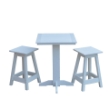





























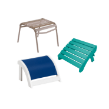





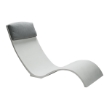







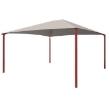
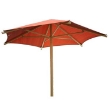
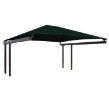
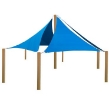
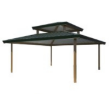
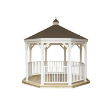
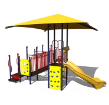











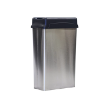




























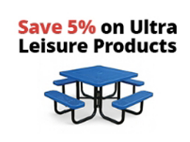



Leave your comment